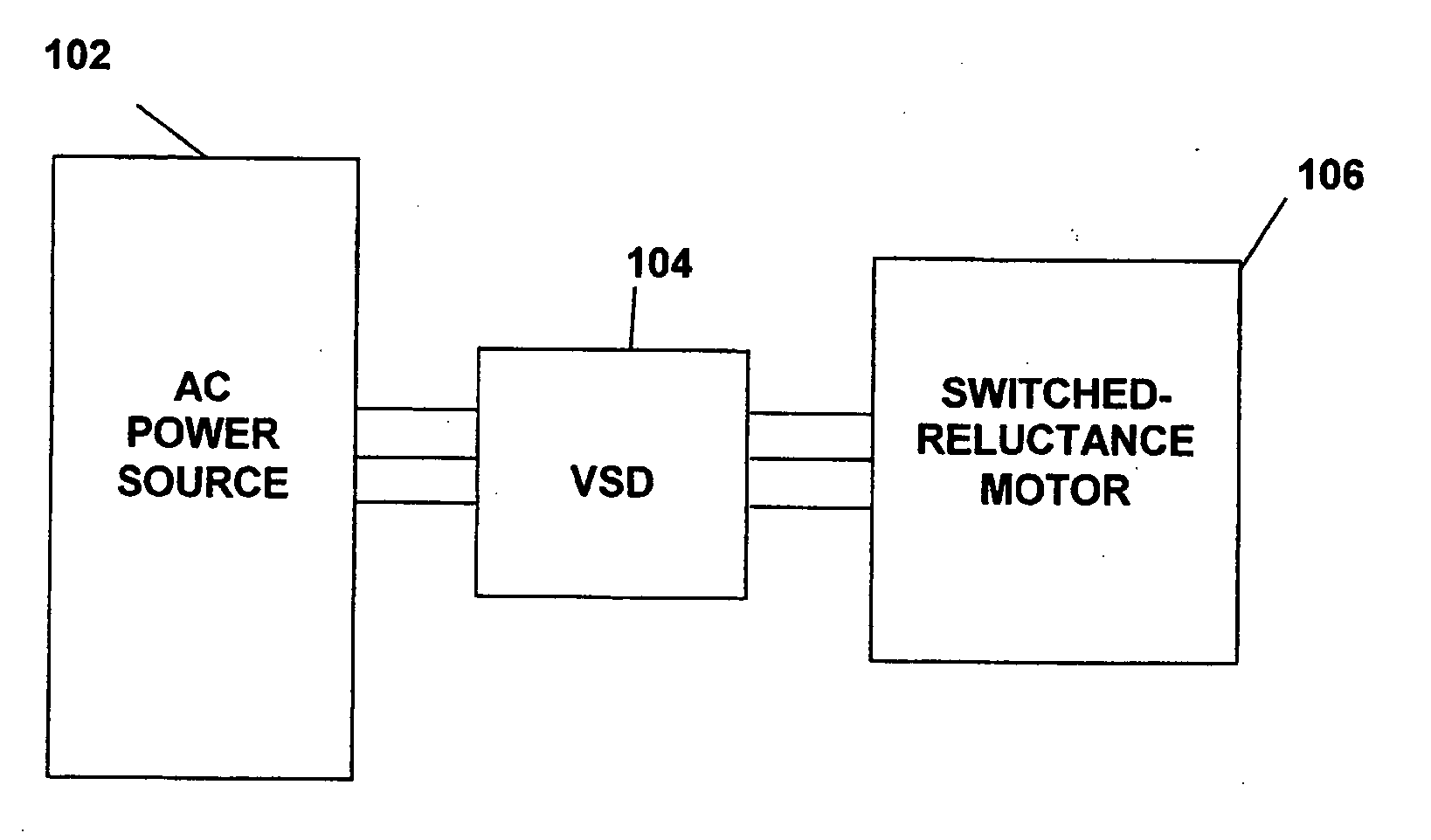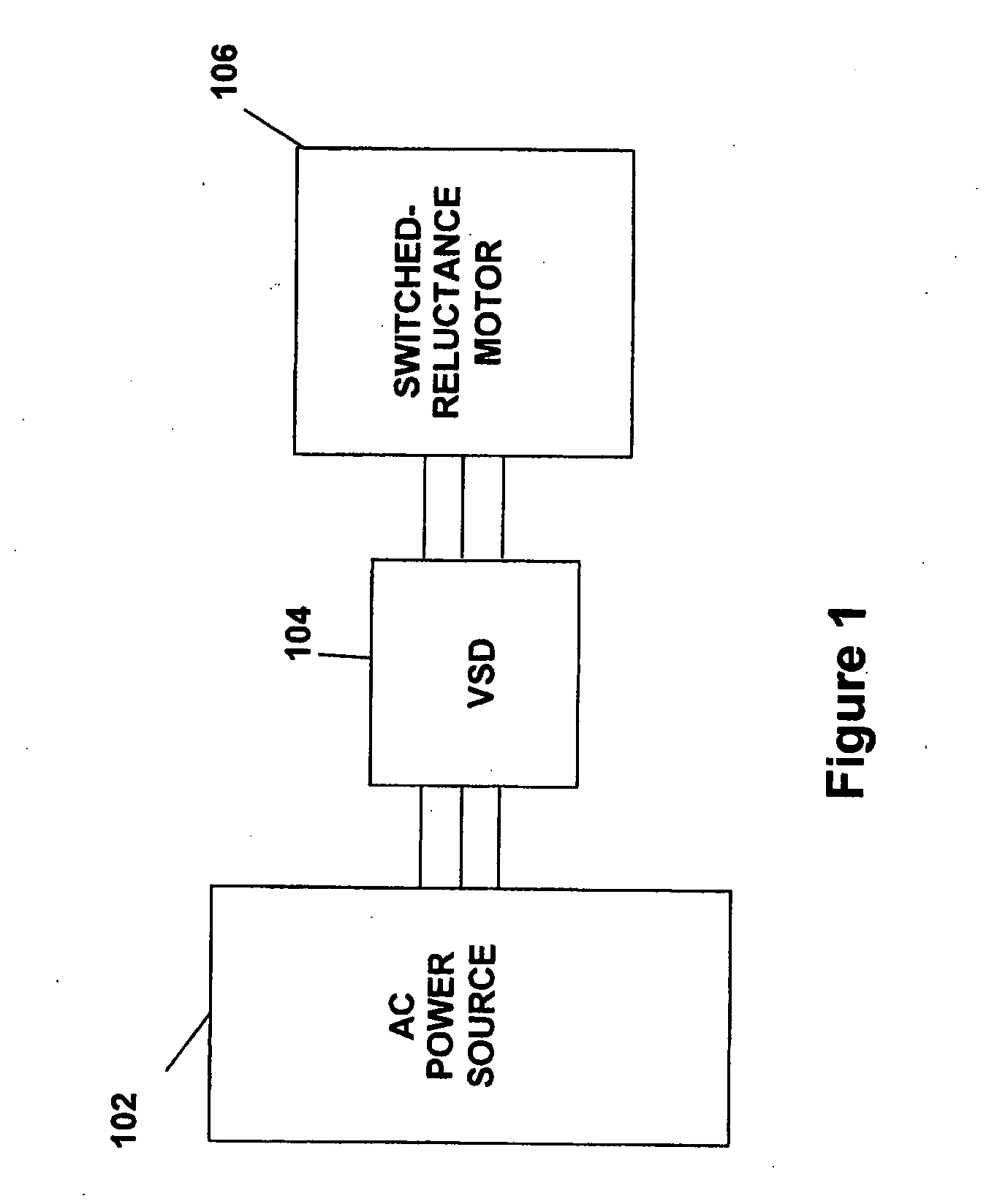Application of a switched reluctance motion control system in a chiller system
a technology of motion control and switched reluctance, which is applied in the direction of motor/generator/converter stopper, dynamo-electric converter control, etc., can solve the problems of motors that require their own controller or electronic drive, e.g., switched reluctance motors, and cannot be used in chiller systems. , to achieve the effect of improving system efficiency, reducing operating temperatures, and improving overall system efficiency
- Summary
- Abstract
- Description
- Claims
- Application Information
AI Technical Summary
Benefits of technology
Problems solved by technology
Method used
Image
Examples
Embodiment Construction
[0027]FIG. 1 illustrates generally a system configuration of the present invention. An AC power source 102 supplies a variable speed drive (VSD) 104, which powers a switched reluctance (SR) motor 106. In another embodiment of the present invention, the variable speed drive 104 can power more than one switched reluctance motor 106. The SR motor 106 is preferably used to drive a corresponding compressor of a refrigeration or chiller system (see generally, FIG. 3). The AC power source 102 provides single phase or multi-phase (e.g., three phase), fixed voltage, and fixed frequency AC power to the VSD 104 from an AC power grid or distribution system that is present at a site. The AC power source 102 preferably can supply an AC voltage or line voltage of 200 V, 230 V, 380 V, 460 V, or 600 V, at a line frequency of 50 Hz or 60 Hz, to the VSD 104 depending on the corresponding AC power grid.
[0028] The VSD 104 receives AC power having a particular fixed line voltage and fixed line frequency...
PUM
 Login to View More
Login to View More Abstract
Description
Claims
Application Information
 Login to View More
Login to View More - R&D
- Intellectual Property
- Life Sciences
- Materials
- Tech Scout
- Unparalleled Data Quality
- Higher Quality Content
- 60% Fewer Hallucinations
Browse by: Latest US Patents, China's latest patents, Technical Efficacy Thesaurus, Application Domain, Technology Topic, Popular Technical Reports.
© 2025 PatSnap. All rights reserved.Legal|Privacy policy|Modern Slavery Act Transparency Statement|Sitemap|About US| Contact US: help@patsnap.com



